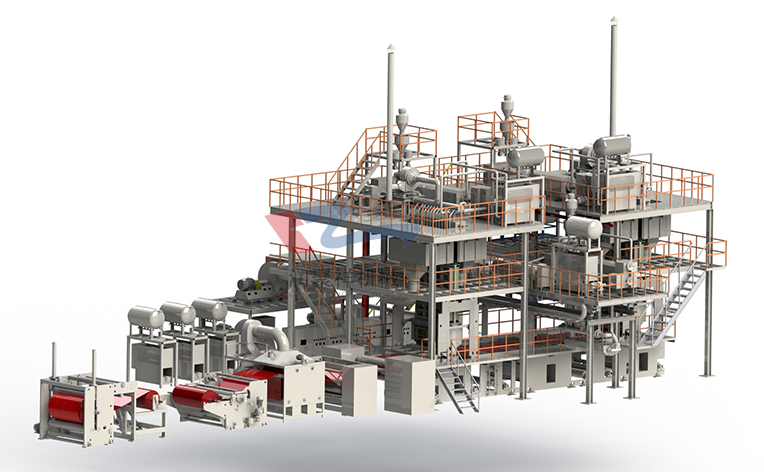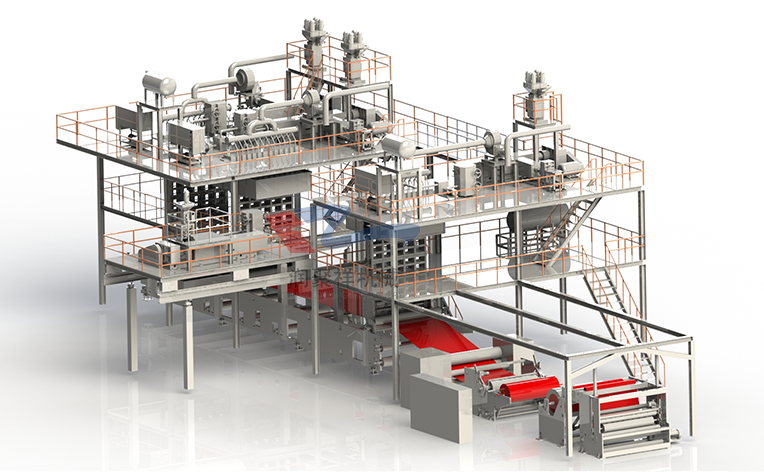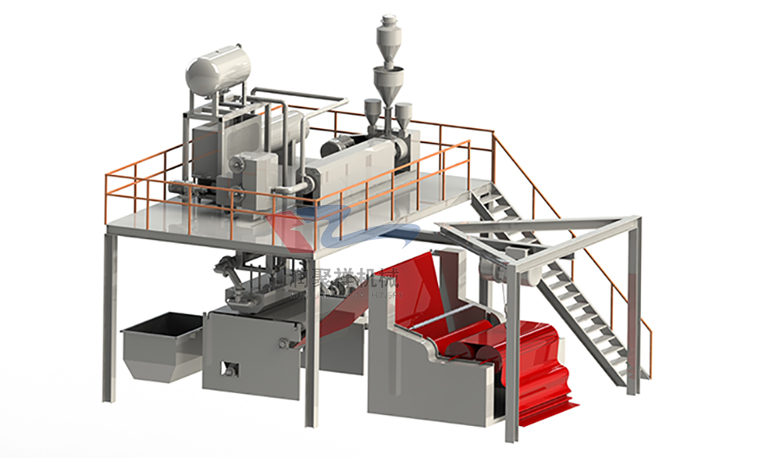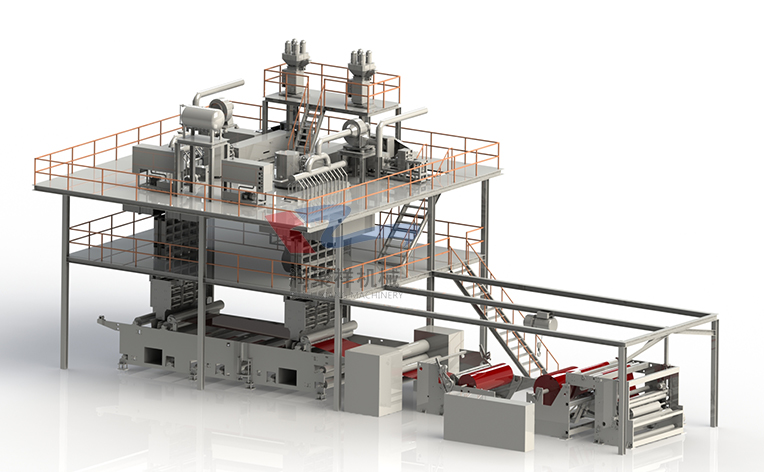

- Contact:Ms. Zhang
- Cel:0086-18053229518
- Mail:info@qdrunjuxiang.com
- Add:Chengma Road, Qijialing Village, Tongji New District, Jimo City, Qingdao
China's economy showed its transcript in the first half of the year, and the textile industry contributed to the "midterm exams"!
China's economic development has attracted worldwide attention. What is the result of this year's "midterm exam"? The preliminary GDP calculation data for the first half of the year released by the National Bureau of Statistics recently showed that the gross domestic product in the first half of the year was 5,32167 billion yuan, a year-on-year increase of 12.7% at comparable prices, a decline of 5.6 percentage points from the first quarter; an average growth rate of 5.3% over the two years. The average annual growth rate was 0.3 percentage points faster than that in the first quarter. A spokesperson for the National Bureau of Statistics said: The national economy in the first half of the year can be said to have sustained a stable recovery, stabilized and strengthened, and stabilized and improved. Judging from some of the data currently available, the textile industry has made its own contribution to this report card.
China's economy handed over its dazzling report card in the first half of the year
Since the beginning of this year, my country's economy has continued to recover steadily, and the quality of operation has been further improved. Four characteristics are shown in general:
1. The economy continues to recover steadily and the foundation for development is more consolidated
In the first half of the year, my country’s GDP was 5,32167 billion yuan, a year-on-year increase of 12.7% at constant prices, and an average growth rate of 5.3% over the two years. Among them, the added value of the primary industry was 2,840.4 billion yuan, a year-on-year increase of 7.8%, an average increase of 4.3% in the two years; the added value of the secondary industry was 2,07154 billion yuan, a year-on-year increase of 14.8%, and an average increase of 6.1% in the two years; the tertiary industry increased The value was 2966.1 billion yuan, an increase of 11.8% year-on-year, and an average growth rate of 4.9% over the two years.
2. The production situation continues to improve, and the development momentum continues to stimulate
In the second quarter, industrial production continued to grow rapidly. Industrial added value increased by 8.8% year-on-year, driving economic growth by 2.8 percentage points, and the two-year average growth rate was 6.4%, of which manufacturing added value increased by 9.2% year-on-year, accounting for 28.3% of GDP. This is an increase of 0.8 percentage points from the first quarter, and the trend of recovery in the proportion has continued for three quarters.
3. Consumption has an obvious role in stimulating consumption, and investment and net exports are synergistically exerted
Consumption plays a significant role in the "ballast stone" of economic growth. As a series of policies to expand domestic demand and promote consumption continue to exert force, factors such as Qingming Festival, May 1st, and Dragon Boat Festival have led to the steady recovery of the consumer market, which has significantly increased its role in stimulating economic growth.
Investment demand drove the sustained and stable recovery of the economy. All regions and departments conscientiously implement the Party Central Committee's decision and deployment, focus on the "two new and one heavy" and shortcomings, increase the promotion of major project construction, expand effective investment, and support economic recovery. In the first half of the year, the contribution rate of total capital formation to economic growth was 19.2%, driving economic growth by 2.4 percentage points. Among them, the contribution rate of total capital formation in the second quarter to economic growth was 13.2%, driving economic growth by 1.0 percentage point. In the first half of the year, the national fixed asset investment (excluding rural households) increased by 12.6% year-on-year, and the two-year average growth rate was 4.4%.
From January to May this year, the fixed asset investment in the textile industry increased by 17.1% year-on-year, the clothing industry increased by 8.3% year-on-year, and the chemical fiber industry increased by 21.7% year-on-year.
Net export demand continues to grow. The effect of stabilizing foreign trade continued to show up, and imports and exports grew well. In the first half of the year, net exports of goods and services contributed 19.1% to economic growth, driving economic growth by 2.4 percentage points, and driving economic growth by an average of 1.1 percentage points in two years.
According to customs data, China's textile and apparel exports maintained steady growth in the first half of the year. In terms of RMB and U.S. dollars, they increased by 3.3% and 11.9% over the same period last year, respectively, and maintained rapid growth compared with the same period in 2019. Among them, textiles declined year-on-year due to the decline in exports of masks, and clothing grew rapidly, driven by the rebound in external demand.
4. New momentum boosts economic recovery, and new business formats release market vitality
The development momentum of new kinetic energy is good, and the emerging industries are active. In the first half of the year, the added value of high-tech manufacturing and equipment manufacturing above designated size increased by 22.6% and 22.8% year-on-year, respectively, which were 6.7 and 6.9 percentage points higher than the growth rate of all industries above designated size.
Textile contributes to the stable recovery of industrial economy
In the first half of 2021, the results of the overall planning of epidemic prevention and control and economic and social development continued to be consolidated, the industrial economy continued to recover steadily, the capacity utilization rate was at a relatively high level in recent years, exports maintained rapid growth, and corporate efficiency improved. Among them, the economic performance of the textile industry is stable, the utilization rate of production capacity has rebounded significantly, and the export of epidemic prevention materials has increased significantly, which has made industry contributions to promoting the steady growth of the industrial economy.
1. Industrial production grows steadily, with a high level of capacity utilization
Industrial production has grown rapidly, and the growth rate is higher than the level before the epidemic. From January to June, the value-added of industrial enterprises above designated size increased by 15.9% year-on-year, and the growth rate dropped by 8.6 percentage points from the first quarter; the two-year average growth rate was 7.0% (based on the corresponding period in 2019 and calculated using the geometric average method) , Which was 0.2 percentage points faster than the first quarter, and the growth rate was slightly higher than the level before the epidemic. Among them, the manufacturing industry, as one of the three major categories, grew by 17.1%, with an average growth rate of 7.5% in two years, which was higher than the level before the epidemic, and became the ballast stone for the steady reinforcement of industrial production.
Over 80% of industries and products have achieved growth. In terms of different industries, from January to June, 39 of the 41 major industries achieved year-on-year growth in added value, of which 29 industries achieved double-digit growth; from the two-year average, 35 industries achieved growth and industry growth The surface area reached 85.4%. In terms of products, from January to June, among the 612 major industrial products, the output of 535 products increased year-on-year, and the growth area reached 87.4%.
The capacity utilization rate is at a relatively high level in recent years. From January to June, the industrial capacity utilization rate was 77.9%, an increase of 6.8 percentage points from the same period last year, and an increase of 1.7 percentage points from the same period in 2019, which was a relatively high level in recent years. Among them, the capacity utilization rate of the textile and chemical fiber industries has rebounded significantly, an increase of more than 9 percentage points over the same period last year.
2. The trend of industrial upgrading is obvious, and new kinetic energy grows stronger
The leading role of equipment and high-tech manufacturing is prominent. From January to June, the added value of the equipment manufacturing industry and high-tech manufacturing industry increased by 22.8% and 22.6% year-on-year respectively, which was significantly higher than that of other industry sectors; the two-year average growth rate was 11.0% and 13.2% respectively, and the growth rate rebounded from the first quarter. It is more than 4% higher than that of industries above designated size.
3. The production of raw materials has basically resumed, and the production of consumer goods continues to improve
The raw material industry is growing steadily. From January to June, the added value of the raw material industry increased by 12.8% year-on-year, and the two-year average growth rate was 6.0%, which was close to the level before the epidemic. Among them, the non-metallic mineral products, chemical raw materials, and iron and steel industries grew by 18.8%, 14.5%, and 11.5% respectively, and the two-year average growth rate was above 6%.
The consumer goods industry continues to recover. From January to June, the added value of the consumer goods industry increased by 13.5% year-on-year, with an average growth rate of 4.8% over the two years. Among them, the growth rate of food, textile, paper, chemical fiber and other industries is 8.2% to 13.4%, showing a gradual recovery trend.
3. Industrial exports are growing rapidly, and exports of key commodities are strong
The value of industrial export delivery has grown rapidly. From January to June, my country's industrial export delivery value achieved a year-on-year increase of 22.9%, and the two-year average growth rate was 8.1%.
The export of anti-epidemic related materials has increased significantly. Among them, the strong overseas demand for the raw materials required for epidemic prevention products has driven the export delivery value of the chemical fiber manufacturing industry to increase by 51.8%. The export of medical and other anti-epidemic and transportation equipment and materials provides strong support for global anti-epidemic and economic recovery.
4. The profitability of industrial enterprises has increased, and the operating conditions continue to improve
The profits of industrial enterprises have grown rapidly. From January to May, the profits of industrial enterprises above designated size increased by 83.4% year-on-year, an average increase of 21.7% in two years, continuing the rapid growth momentum since the second half of last year.
From January to May this year, the total operating income of 33,000 textile enterprises above designated size across the country was 189.01 billion yuan, a year-on-year increase of 20.8%; total profits were 89.17 billion yuan, a year-on-year increase of 56.4%; operating income margin was 4.7%, a year-on-year increase of 1.1 percentage points .
In the first half of the year, the industrial economy was operating steadily and strengthened, but the imbalance among enterprises, industries, and regions has intensified. The increase in commodity prices has increased its impact on the middle and lower reaches of the industry. Breakpoints in the supply chain of the industrial chain still exist, and external uncertainties There are many factors, and the stable recovery of the industrial economy is still facing many challenges. In the next step, we should focus on accelerating the construction of a new development pattern, continue to expand the strategic basis of domestic demand, take effective measures to cope with the rapid rise in commodity prices and its associated effects, ease the cost pressure of small, medium and micro enterprises, strengthen the upstream and downstream collaborative innovation of the industrial chain, and consolidate the industry. The economy is growing steadily.
There are answers to the key questions that the textile industry cares about
Based on the latest data in the first half of the year, the heads of relevant departments will give answers to key industry issues such as green transformation, energy saving and low carbon, rising commodity prices, as well as policy guidance and development directions in the second half of the year.
ECO development
Under the guidance of the dual-carbon goal, many high-energy-consuming industries have begun to explore green transformation. How does the Ministry of Industry and Information Technology guide the green transformation of high-energy-consuming industries? What plans are there to guide the green development of the industrial industry in the next step?
Huang Libin, spokesperson of the Ministry of Industry and Information Technology and Director of the Operation Monitoring and Coordination Bureau: Industry is one of the important areas of energy consumption and carbon emissions in my country. Promoting the realization of industrial green development is an active and effective measure to fulfill the promise of carbon peak and carbon neutrality. Our Ministry is about to release the "14th Five-Year" Industrial Green Development Plan and the "14th Five-Year" Raw Material Industry Development Plan, which will promote industry and its development in terms of industrial structure, energy consumption, production process, resource utilization, and product supply. Green and low-carbon transformation of high-energy-consuming industries, strengthen the supporting role of the green manufacturing system, and increase emissions and carbon reduction efforts from the source.
Our ministry will speed up the implementation of the carbon peaking action in the industrial sector, and work with relevant departments to formulate implementation plans for carbon peaking in key industries such as non-ferrous metals, building materials, steel, petrochemicals, etc., clarify the implementation path of industrial carbon reduction, promote major low-carbon technology and technology, and carry out carbon reduction Demonstration of major projects to promote the implementation of carbon peak targets in various industries.
The next step will focus on promoting the following six areas:
One is to promote the high-end transformation of the industrial structure. Resolutely curb the blind development of "two highs" projects, improve and strictly implement policies related to production capacity replacement, promote the elimination of backward production capacity, and develop strategic emerging industries and high-tech industries.
The second is to accelerate the transition to low-carbon energy consumption. Increase the proportion of clean energy consumption, improve energy utilization efficiency, improve energy management and service mechanisms, and build a clean, efficient, and low-carbon industrial energy structure.
The third is to promote the recycling transformation of resource utilization. Promote the coordinated utilization of primary resources and the recycling of renewable resources, promote the large-scale comprehensive utilization of industrial solid waste and the conservation and utilization of water resources, and reduce the amount of industrial solid waste and wastewater generated.
Fourth is to promote the clean transformation of the production process. Vigorously promote green design, promote the implementation of cleaner production technology transformation in stock enterprises, promote advanced and applicable environmental protection equipment in key industries, and promote the formation of stable and efficient governance capabilities.
Fifth is to guide the green transformation of product supply. Increase the supply of green and low-carbon products and green equipment to provide a solid guarantee for a comprehensive green and low-carbon transformation in various fields.
Sixth, improve the green manufacturing support system. Create a green public service platform, improve the green manufacturing standard system, run through the green supply chain management, and improve the long-term mechanism of industrial green and low-carbon transformation.
Commodity prices are rising
Data shows that PPI rose by an average of 5.1% in the first half of this year, an increase of 3 percentage points over the first quarter. How does the Ministry of Industry and Information Technology view the cost pressures of rising PPIs on mid- and downstream companies? Will there be further measures to help small, medium and micro companies cope with the crisis?
Huang Libin: Affected by the rapid economic recovery and multiple internal and external factors, the prices of raw materials have risen sharply since the beginning of the year, and fluctuated at high levels. In the first half of the year, the industrial producer price (PPI) rose by an average of 5.1%. In the second quarter, the year-on-year increase in PPI was significantly expanded. This put a lot of pressure on the costs of mid- and downstream industries and related companies, squeezing the profit margins of companies. Among them, most of the small and medium-sized enterprises are in the middle and lower reaches of the industrial chain, and their bargaining power is not strong. It is difficult to absorb the pressure of rising costs caused by the sharp rise in raw materials in a short time. The impact of rising costs on the production and operation of SMEs is relatively more prominent.
The reasons for this round of commodity price increases are more complicated. On the whole, global demand recovers faster than supply, domestic demand recovers faster than international, and liquidity releases faster than the real economy recovers. To a considerable extent, price increases are intertwined with factors such as supply and demand mismatch, external input influence, and speculation. , The result of superposition. From the perspective of later trends, unlike the two “super cycles” of commodity price increases in the 1970s and the beginning of this century, this round of price increases is more the result of the superimposition of short-term factors, and global debt is high, rich and poor. In-depth contradictions such as differentiation and population aging determine that long-term demand is difficult to expand, and the possibility of significant supply contraction is also relatively small, so it is difficult to form a "super cycle".
The Party Central Committee and the State Council attach great importance to the impact of rising raw material prices on mid- and downstream industries and small, medium and micro enterprises. The executive meeting of the State Council focused on the issue of excessively rapid increase in commodity prices, and recently used monetary policy tools such as RRR cuts to further strengthen financial support to the real economy, especially small, medium and micro enterprises, to hedge against the impact of commodity price increases on the production and operation of enterprises .
In the next step, we will cooperate with relevant departments to ensure the supply and price stability of bulk commodities, strengthen publicity and guidance and policy interpretation, support upstream and downstream industries to establish long-term and stable cooperative relations, and guide upstream and downstream industries to stabilize the supply of raw materials and coordinate production, supply and marketing. To deal with the risk of market price fluctuations, we must resolutely crack down on hoarding, malicious speculation, and price drive ups.
- In the prelude of early winter,
- The volume of industrial textile
- After the Minor Snow season, Qin
- Innovation and upgrading in the
- The non-woven fabric machinery o
- The operation of China's industr
- As the chill of November intensi
- The textile industry forges new
- What are the wide application fi
- A brief overview of the operatio
- About RunJuXiang
- Company Profile
- Company Culture
- Non-woven production line
- Spunbond nonwoven production line
- Two-component Bi-Co
- Spun melted nonwoven production line
- Equipment Accessories
- Meltblown nonwoven production line
- Non-woven products
- News Center
- Company News
- Show Information
- Contact Us
- Contact RunJuXiang
- Online Message





